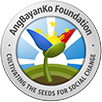It's Never Too Late Now to Stay Safe
Of course, we all heard the names Yolanda, Auring, Milenyo, Pablo, and the list goes on. These are all tropical cyclones, which by names alone are enough to summon memories of lost lives of our loved-ones and kababayans, damaged properties, infrastructure and livelihood, and months of fumbling in the dark, literally and figuratively.
PAG-ASA recently issued to the public the official and auxiliary names of tropical cyclones that will enter the PAR (Philippine Area of Responsibility). Although the country is visited by an average of 20 typhoons a year, auxiliary names are also listed in case the initial names are all assigned.
Pag-ASA or Philippine Atmospheric, Geophysical and Astronomical Services Administration is the mandated authority to monitor weather and natural calamities in the country in a timely, accurate, and reliable manner.
Tropical cyclone is characterized by very intense low pressure wind system which develop in tropical oceans. Due to its geographical location, the country is prone to intense weather disturbance resulting to heavy rains, strong winds, flooding of large areas, to name a few. Tropical cyclone is also called hurricanes or typhoons in other parts of the world.
Since tropical cyclones are inevitible given our geographical location, it is important that we stay and active in seeking information, and proactive in safekeeping our lives and resources. Here are the rules of thumbs we can practice before, during, and after tropical cyclones as advised by PAGASA and compiled by news outfit. To view more details, click here.








